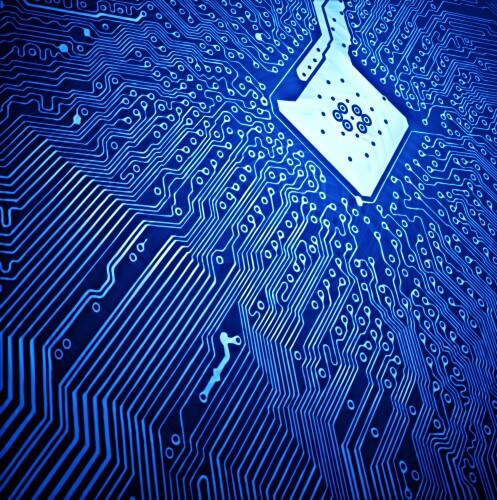An optical chip with a size of four millimeters will replace a much larger spectrometer, and will allow immediate identification of substances such as medical samples, explosives, air pollution and more

Researchers from Ben-Gurion University of the Negev and the University of Southampton in England reached a breakthrough in the field of optical microchips. They etched waveguides, channels through which the light would flow, onto a piece of polished glass, with molecules drawn to the miniature circuits once charged with oxygen. These new optical chips have many applications in the fields of biomedicine and optical communication.
One of these applications is a spectrometer that is only four millimeters in size, which can provide immediate results. The chip immediately analyzes the chemical properties of the material and reveals its unique signature. The signature is the specific frequency at which the chemical bond resonates when light passes through it.
Such devices can instantly differentiate between viruses, analyze any substance or detect environmental pollutants such as air and water pollution.
Current spectrometers are usually many times larger, and in hospitals they require a dedicated technician to move them from room to room. In addition, the sample sizes required are so large that certain delicate processes could not be carried out until now, lest they harm the patient. Dr. Alina Karabachevski from Ben-Gurion University of the Negev, the lead researcher, and her colleague, Prof. Alexei Kavkin from the University of Southampton, not only substantially improved the detection mechanism, but made it possible to significantly minimize the size of the material sample required to perform the chemical analysis and identify the fingerprint of the material.
Their groundbreaking findings were recently published in the prestigious journal Scientific Reports from the Nature Publishing Group, they are the first to use simple glass as the basis for such chips.
"Our new chip can be the basis for a spectrometer at the bedside of every patient in every hospital. The means we use, glass and light, are cheap and abundant. A single drop of sample on one of the waveguides can be analyzed at the speed of light. In fact, one piece of glass can analyze several substances at the same time," says Dr. Kravchevsky.
Furthermore, adds Dr. Karachevski, it will now be possible to carry out delicate processes such as analyzing a sample from the lungs of a sick baby, where all that is needed is a tiny sample. Until now, such processes required too large a sample, putting the patient at risk.
Other applications include real-time analysis of suspected explosives using a hand-held device, she says.
"There are many new directions that this work encourages us to explore: from breakthroughs in the fundamentals of the interaction between light and molecular harmonics (overtones) under radiation passing through the chip, to actual devices such as spectrometers and particle detectors on a chip and "doctor in your pocket" devices. Also, this work paves the way for a wider application of organic integrated photonic components, such as filters and switches with higher capabilities, which will revolutionize integrated photonic technology, which today is mainly based on semiconductors," says Kravchevsky.
Dr. Karabachevski is the head of the Or-on-a-Chip Group and a member of the Electro-Optics Engineering Unit and the Ilza Katz Institute for Science and Technology in the Nanoscale Field at Ben-Gurion University of the Negev. Prof. Cavokin is the head of the Nanophysics and Photonics Unit in the Department of Physics and Astronomy at the University of Southampton.

3 תגובות
Teva should invest in such a project. Although it is a medical device and not a medicine. But also Professor Hayek's nose. And this may generate employment for many workers.
I came across this article late. This is a real breakthrough for a variety of tests through blood, or even by passing light through the finger and turning equipment that costs hundreds of thousands of dollars into equipment available to any doctor in making a decision about what we are sick with. The entire mechanism of sending a blood test to the laboratory and receiving an analysis has become available.
Stunning.
Money should be poured into them and they should recruit a lot more manpower to explore all the possibilities.